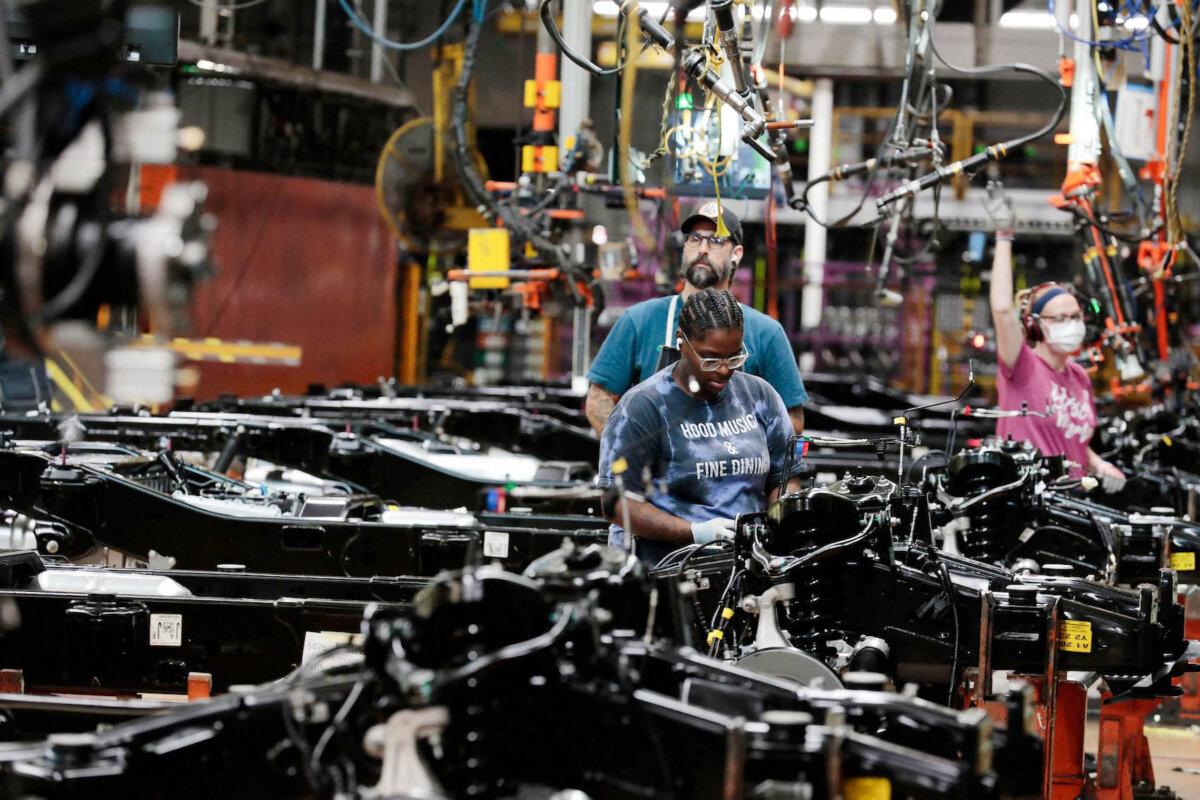US Manufacturing Activity Beats Wall Street Estimates Despite Tariff Uncertainty
Investors have worried about a tariff-driven economic slowdown, but Main Street’s reaction has been mixed.
U.S. manufacturing activity contracted for the second straight month in April, but the sector performed better than market forecasts.
A reading below 50 indicates contraction in a sector that accounts for about 10 percent of the U.S. economy.
Economists had projected the PMI, which has been in contraction territory for 28 of the last 30 months, would decline to 48.
This was a long-awaited report for market watchers as it covered the manufacturing industry since President Donald Trump’s tariff announcement on April 2. He unveiled the contours of his sweeping trade agenda, and has since raised levies on Chinese goods entering the United States to 145 percent.
The new U.S. tariffs have been expected to significantly influence manufacturing’s short- and long-term performance.
Factory output fell sharply last month as demand eased. New orders, a forward-looking sub-index, tumbled at a slower pace. However, they declined to the lowest reading since May 2022.
Cost pressures remained elevated in the manufacturing sector as prices advanced to their highest levels since June 2022.
Input cost pressures advanced to their highest reading since June. The employment sub-index improved from the previous month, though companies continued to trim their headcount.
“Demand and production retreated and de-staffing continued, as panelists’ companies responded to an unknown economic environment,” said Timothy Fiore, head of the organization’s Business Survey Committee, in a release. “Prices growth accelerated slightly due to tariffs, causing new order placement backlogs, supplier delivery slowdowns and manufacturing inventory growth.”
Tariff Talk
Tariffs remain the talk of the town.
Comparable to other business surveys, the firm’s April PMI highlighted respondents’ concerns surrounding higher import duties and uncertainty regarding trade policy.
“The most important topic is tariffs,” a food, beverage, and tobacco products manufacturer said in the survey.
One manufacturer stated that the White House’s 145 percent tariff rate on Chinese imports will likely impact the company’s 2025 profitability.
“Due to the complexity of our parts and the lack of alternate sources, we are unable to find any alternate suppliers—especially at a reasonable cost—to our current Chinese sources. Incoming orders have slowed due to market volatility and uncertainty,” the respondent stated.
The alternative study indicated expansion in manufacturing for the fourth consecutive month. The marginal increase occurred as output slipped, new export orders plunged, and input cost growth slowed slightly. Business confidence, meanwhile, weakened to a nine-month low.

Workers put engines on the frame of Ford Motor Co. fuel-powered F-150 trucks at its truck plant in Dearborn, Mich., on Sept. 20, 2022. Jeff Kowalsky/AFP via Getty Images
“Concerns have also spiked in terms of input costs, especially for imported materials and components, due to the triple whammy of tariff-related price hikes, supply shortages, and the weaker dollar,” said Chris Williamson, chief business economist at S&P Global Market Intelligence.
Scores of manufacturing surveys by regional Federal Reserve banks have spotlighted collapsing readings.
The Dallas Fed’s general business activity index for Texas manufacturing, for example, dropped to its lowest level since May 2020. Likewise, the Philadelphia Fed Manufacturing Index recorded the sharpest decline since April 2023.
Revitalizing Manufacturing
A driving factor behind the Trump administration’s push to level the playing field and impose tariffs on trading partners, particularly China, is bringing manufacturing back to the United States.
The president has vowed to welcome a new golden age of America.
“We need to reshore manufacturing,” Greer said.
“Everyone knows, if you want certainty, if you want access, you build in America and you use American labor.”
Shortly after Trump’s April 2 event, which revealed baseline and reciprocal tariffs, Wall Street panicked. U.S. stocks wiped out trillions of dollars in shareholder wealth, though they have recovered in recent sessions. The blue-chip Dow Jones Industrial Average, for example, is down only 2.5 percent for the month.
But while investors have worried about a tariff-driven economic slowdown and an inflation revival, Main Street’s reaction has been mixed.
“It may be hard for a while, but we need to do something before America goes bankrupt. This should have been done decades ago,” one individual said in the April Freedom Economy Index.
Over the last several weeks, many U.S. and foreign corporations have announced plans to invest in U.S. manufacturing activities in the coming years, committing to a cumulative $4 trillion to $5 trillion.
IBM became the latest company to pledge a $150 billion investment in domestic manufacturing and research and development. The tech giant joins other industry leaders, such as Apple, Nvidia, OpenAI, and Japan’s Softbank, in making hefty U.S. investments.
Tech company Corning also announced on April 30 that it is increasing its Michigan solar manufacturing facility investment to $1.5 billion.





